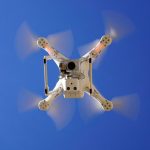
Unmanned aerial vehicles are used in numerous fields. One area where drones play a particularly important role is agriculture. According to Fortune Business Insights’ Argiculture Drones Market Global Report, the global agricultural drone market was $4.98 billion in 2023 and is expected to grow to $23.78 billion by 2032[1].
The future of agriculture will be rich in innovation – drones are likely to be used in conjunction with artificial intelligence, which will allow, among other things, the monitoring of crops by recognising different species and varieties and different stages of their development. Given the ongoing research into technology development, it is important not to forget the numerous solutions that we can already see in agriculture today.
Precision agriculture is the concept of modern farm management using digital techniques to monitor and optimise agricultural production processes[2]. Already today, the use of drones in agriculture allows for, among other things, monitoring the condition of crops, estimating hunting damage and spraying crops. Drones allow rapid monitoring of fence conditions and can detect unwanted activity, as well as identifying sick, injured or lost animals. Agrodrones reduce the use of chemicals by precisely targeting areas in need of treatment, saving natural resources and reducing pollution levels.
The use of drones in agriculture represents an opportunity to improve the way farmers work and live, as well as increased production efficiency with the same or less inputs. Drone technology has the potential to revolutionise agriculture, making it more efficient and profitable, while promoting sustainability.
[1] Agriculture Drones Market Global Report, Fortune Business Insights
https://www.fortunebusinessinsights.com/agriculture-drones-market-102589
[2] Precision farming and the future of agriculture in Europe
https://www.europarl.europa.eu/RegData/etudes/STUD/2016/581892/EPRS_STU(2016)581892_EN.pdf







